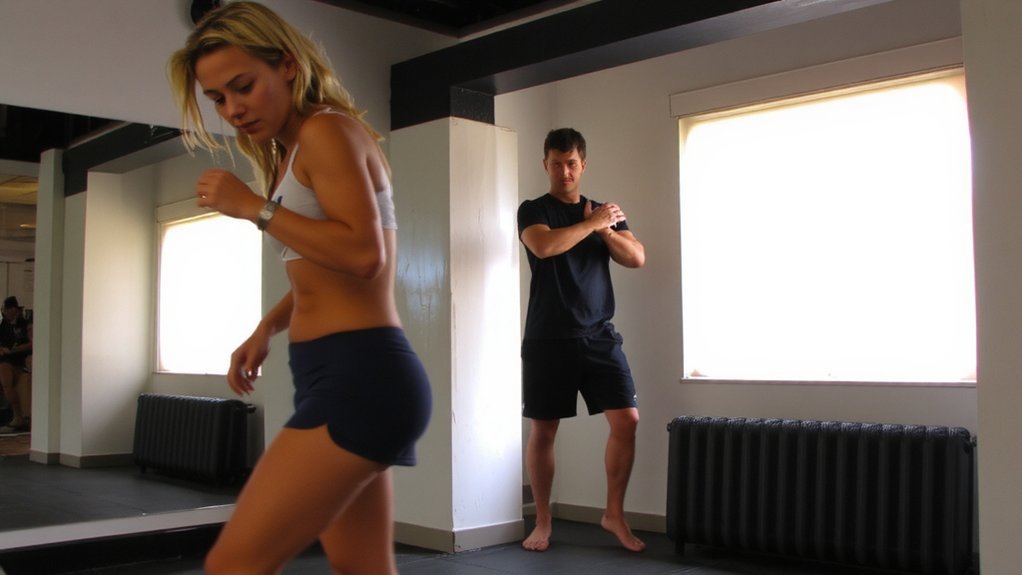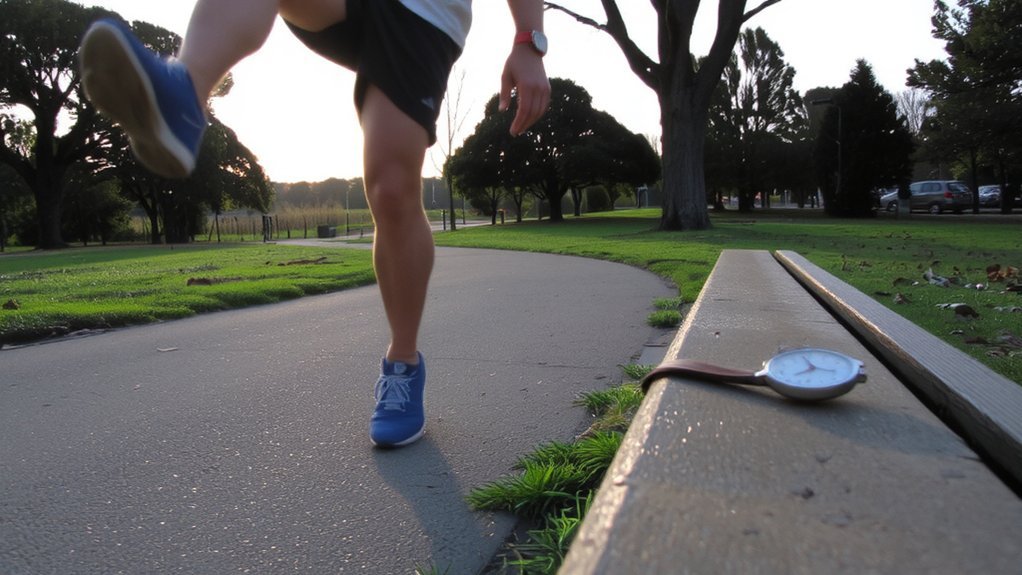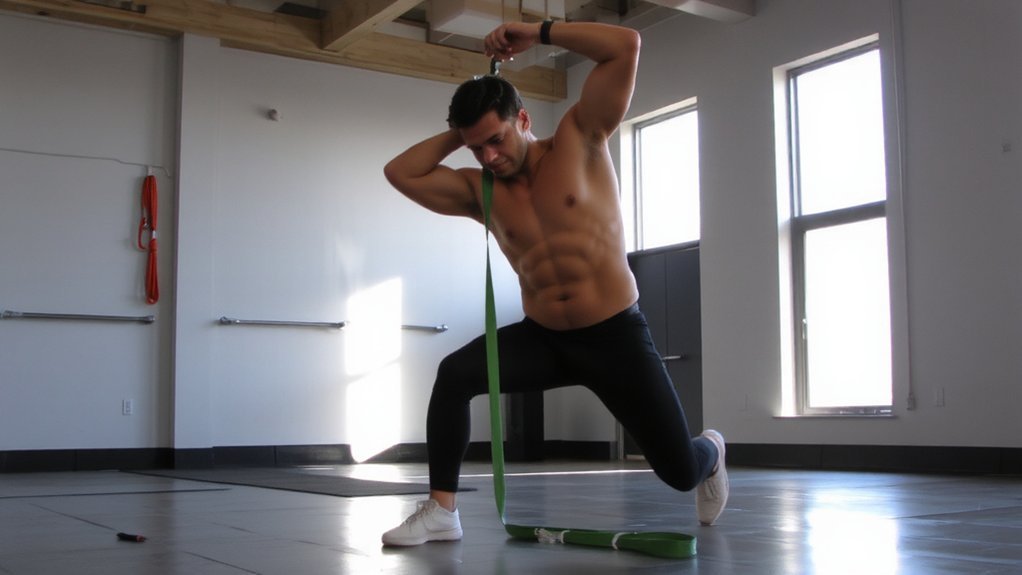Before stretching, you should raise your heart rate and warm your muscles with 5–10 minutes of light movement. Use dynamic stretches that mimic your activity and save long static holds for after training. Doing it this way reduces injury risk and boosts performance. Here’s how to do it right.
Why Warm Up Before Stretching

If you skip a warm-up, your muscles stay cool and stiff, which raises your risk of strains and limits how effectively stretching increases range of motion.
You should raise your core and muscle temperature with light activity—walking, easy cycling, or joint-specific movements—for five to ten minutes. That boosts blood flow, ramps up oxygen delivery, and loosens connective tissue so stretches work better.
Warming also primes your nervous system, improving coordination and making holds feel more natural.
You’ll reduce injury risk and get more benefit from mobility work when your tissues are pliable. Keep the warm-up specific to your planned activity and progress intensity gradually so you enter stretching prepared rather than forcing cold muscle into motion. Aim to match duration to the exercise’s demands.
Dynamic Vs Static: Which to Use Pre-Workout

While both dynamic and static stretches increase flexibility, they serve different purposes before a workout. You’ll generally choose dynamic stretches pre-workout because they raise heart rate, increase blood flow, and prime movement patterns without reducing muscle power.
Use dynamic moves that mimic the activity’s direction and speed; they warm joints and nervous system for performance. Reserve static holds for post-workout or brief use only if you need to relieve acute tightness — keep them short (about 10–20 seconds) so you don’t blunt strength.
If you’re doing heavy lifting or sprinting, skip long static stretches beforehand. Tailor your approach to your sport, energy level, and any mobility limits, and prioritize movements that prepare you to perform safely and effectively and reduce injury risk when possible.
Effective Dynamic Stretching Exercises

Starting your warm-up with dynamic stretches gets your heart rate up, mobilizes joints, and rehearses the movement patterns you’ll use during training.
Move through controlled, sport-specific drills: leg swings front-to-back and side-to-side to free hips; walking lunges with a twist to open quads and thoracic spine; arm circles and cross-body swings to wake shoulders; hip circles and ankle rolls for lower-limb mobility.
Add inchworms to prime the posterior chain and hamstrings, and toy soldiers (straight-leg march) for dynamic hamstring lengthening.
Use high knees and butt kicks to elevate cadence and coordinate gait mechanics.
Finish with the world’s greatest stretch to link hips, thoracic rotation, and hamstrings.
Keep movements smooth, pain-free, and progressively larger but controlled. Modify intensity based on your planned session and goals.
How Long and When to Stretch Before Exercise

You’ve warmed up with dynamic moves, now time the stretches to match your session: spend about 5–10 minutes on dynamic mobility before most workouts, extending to 10–15 minutes in cold weather or before long endurance efforts, and use sport-specific drills in the final minute to mirror planned actions.
Aim for controlled movement, not static holds, before strength or power work; save prolonged static stretching for after training.
If you’re training multiple times a day, shorten pre-sessions to 3–5 minutes of movement-based prep.
On high-intensity or skill sessions, add progressive rehearsals at increasing intensity to prime timing and coordination.
When you’re uncertain, err on slightly longer mobility and rehearsal rather than rushing; finish just before you start it so the body stays loose and responsive.
Pre-Workout Mobility Benefits

Because mobility work primes your joints and nervous system, you’ll move more efficiently and with less injury risk during training. When you add dynamic mobility before a session, you increase blood flow, raise tissue temperature, and reduce stiffness so movements feel smoother.
You improve joint range for the specific patterns you’ll perform and sharpen neuromuscular control, so muscles fire in the right order. That leads to better technique, more force production, and often higher workout quality.
Mobility also helps correct minor movement asymmetries that can compound into pain under load. Short, targeted mobility routines take little time but can make heavy lifts, fast sprints, or complex drills safer and more productive, letting you train consistently with fewer setbacks and recover faster between training days.
Stretching Protocols to Improve Flexibility Over Time
Building flexibility takes planned, progressive protocols rather than random stretching, and you’ll get the best results by combining methods, frequency, and gradual overload.
Start with dynamic warm-ups pre-exercise to prime range of motion, leg swings, arm circles, hip openers for five to ten minutes.
After workouts, use longer, controlled static holds (30–60 seconds) to consolidate gains.
Include proprioceptive neuromuscular facilitation (PNF) once or twice weekly—contract then relax—to increase tolerance and neuromuscular length.
Schedule at least three dedicated flexibility sessions per week, progressing intensity or duration incrementally every one–two weeks.
Track specific targets (joint, degrees, or functional tasks) and reassess monthly.
You should adjust based on comfort, avoid sharp pain, and progress steadily each week.
Stretching and Injury Prevention: What the Research Says
When you look at the research, the link between stretching and injury prevention is mixed: dynamic warm-ups and sport-specific mobility tend to lower injury risk and improve readiness, while static stretching right before high-intensity activity doesn’t reliably prevent injuries and can temporarily reduce strength and power.
You should favor dynamic warm-ups that raise heart rate, increase muscle temperature, and use controlled sport-specific movements; these tend to reduce acute injuries.
Add mobility drills to address joint limits and movement patterns that matter.
Save prolonged static holds for after training so they don’t blunt performance.
Include progressive loading and neuromuscular work—balance, agility, landing mechanics—to lower risk.
Evidence varies by sport and population, so monitor your response and consult a clinician if you have prior injuries early.
Common Mistakes and How to Avoid Them
Although many people treat stretching as a one-size-fits-all fix, you’ll harm performance or increase injury risk if you use the wrong type, timing, or technique. Common mistakes include static stretching cold muscles, holding excessive force, skipping a dynamic warm-up, and stretching only one side.
You also shouldn’t stretch through sharp pain or rely on discomfort as progress. To avoid those errors, do dynamic movements before strength or cardio, reserve long static holds for after workouts, and use gradual, controlled range-of-motion increases.
Balance bilateral work, address tight areas with targeted mobility, and listen to your body—mild tension is okay, sharp pain isn’t. If you’re unsure, get guidance from a coach or physical therapist to build a safe routine. Small tweaks yield big improvements in safety today.
Conclusion
Before you stretch, warm up with five to ten minutes of light cardio and dynamic moves so your muscles get blood flow and temperature up. Use dynamic stretches—leg swings, walking lunges with a twist, arm circles—before workouts, keeping static holds brief. Finish near activity intensity, and practice regular mobility routines to boost flexibility and cut injury risk. Avoid long static stretches before sprints or power work, and stay consistent for long-term gains over the months.